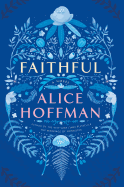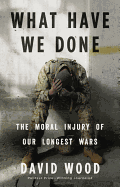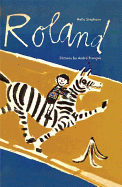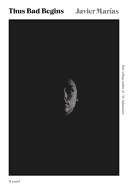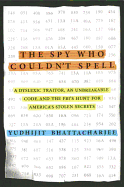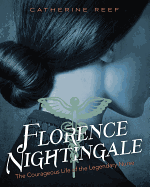Friday, November 11, 2016
What I wanted to do was hopefully complicate the image of veterans of the Iraq War.... At no point did I think that I would be defining the veteran experience.... I was pretty skeptical of anybody who thought they could. --Phil Klay, 2014 National Book Award winner for his story collection Redeployment.
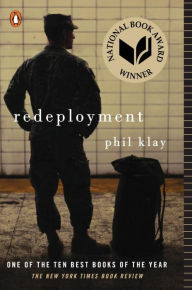 I didn't serve in the military, but my late father was a World War II combat veteran and three of my brothers spent, among them, more than 30 years in the Air Force. So we are, in that sense, a military family. The meaning of Veterans Day is (or, in my father's case, was) markedly different for each of these men, and they honor(ed) the day accordingly.
I didn't serve in the military, but my late father was a World War II combat veteran and three of my brothers spent, among them, more than 30 years in the Air Force. So we are, in that sense, a military family. The meaning of Veterans Day is (or, in my father's case, was) markedly different for each of these men, and they honor(ed) the day accordingly.
I respect those differences, and was reminded of them again a couple months ago when NPR featured a piece headlined "Soldiers Turned Authors Want You to Know: Our Books Don't Speak for All Vets." The works highlighted, some of which I have read and loved, are by post-9/11 vets, but the narrative voices transcend the limits of time frames.
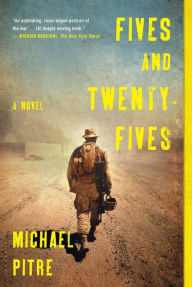 This compact yet complex reading list includes Phil Klay's Redeployment, Michael Pitre's Fives and Twenty-Fives, Elliot Ackerman's Dark at the Crossing, Matt Gallagher's Youngblood, Roy Scranton's War Porn and the graphic novel The White Donkey, written and illustrated by Maximilian Uriarte.
This compact yet complex reading list includes Phil Klay's Redeployment, Michael Pitre's Fives and Twenty-Fives, Elliot Ackerman's Dark at the Crossing, Matt Gallagher's Youngblood, Roy Scranton's War Porn and the graphic novel The White Donkey, written and illustrated by Maximilian Uriarte.
"I don't think anyone is probably particularly interested in writing that offers a bunch of platitudes on the war," Ackerman, who saw combat duty in Iraq and Afghanistan, told NPR. "I think the best writing kind of leaves space for the reader to come to their own conclusions, because if you introduce too much of yourself, you're going to crowd out the reader."
Gallagher, who led a platoon in Iraq in 2007, observed: "These are real people being heroes, being villains, being cowards, sometimes all three of those things in the same day, because that's real life." --Robert Gray, contributing editor
Faithful
by Alice Hoffman
Discover: Alice Hoffman's luminous, bittersweet novel follows a young woman struggling to find her way after a shattering car accident.
Agnes
by Peter Stamm, transl. by Michael Hofmann
Discover: In spare and dispassionate prose, Swiss novelist Stamm's early novel is the narrator's story of a love affair with a woman who asks that he write a story about her, a story whose ending causes him difficulties.
Thus Bad Begins
by Javier Marías, transl. by Margaret Jull Costa
Javier Marías takes his novel's title, Thus Bad Begins, from Hamlet's words to his mother ("Thus bad begins and worse remains behind"), setting the story in Madrid in 1980, when Spain hovered on the verge of legalizing divorce.
Eduardo Muriel--a Spanish film director approaching his 50s, with an Errol Flynn moustache and an eye patch--needs a young personal assistant like 23-year-old Juan de Vere to keep him on his frenetic shooting schedule, which he traditionally dictates while lying supine on the floor. One day Muriel asks Juan what he would do if a lifelong friend were not as he had always believed him to be.
This question launches a plot involving spying, lying, trickery, manipulation, eavesdropping and secret motives that stretch back to the unspeakable crimes of the Spanish Civil War. The mystery surrounds a confounding scene of marital degradation that Juan secretly witnesses--one of sheer malice that Muriel inflicts on his adoring wife, Beatriz.
Marías embeds bristling humor and a wealth of parenthetical insights and wise observations within page-long sentences and extended paragraphs. He playfully manipulates these into a tantalizing plot, one that often slides laterally as it inches toward the next incident, every word or action considered in detail. Out of dozens of subplots that Marías teases, the ones that actually fuel the novel are well chosen and gripping. The secret behind the Muriels' miserable marriage is suitably horrific, and the 445-page novel's conclusion is graceful, fair and hugely satisfying. --Nick DiMartino, Nick's Picks, University Book Store, Seattle, Wash.
Discover: A Spanish film director's marriage-gone-wrong begs questions about telling the truth in love.
Cabo de Gata
by Eugen Ruge, transl. by Anthea Bell
Discover: This clever, stylish novel follows a German man's quietly tortured self-exploration in a Spanish village.
Mystery & Thriller
The Hidden People
by Alison Littlewood
Discover: When a young woman is murdered, her cousin's investigation into her death opens a doorway into a world of superstition.
A Very Pukka Murder
by Arjun Raj Gaind
His Highness the Maharaja Sikander Singh, king of Rajpore, a small kingdom in northern India, is bored. The New Year's festivities put on by the English weren't enough to rouse Sikander, but the news that Major William Russell, in charge of the English forces in Rajpore, was found apparently poisoned on the first morning of 1909, does.
Russell, the English Resident, was a hard man, and the curious Sikander soon discovers that he was not alone in disliking him. Sikander and the Resident's servants felt the lash (sometimes quite literally) of his racism, but even the Resident's fellow Englishmen seem to have many motives to wish him dead. He thwarted ambitions, preyed on defenseless women and angered many important people.
It will take all of Sikander's cunning to solve the crime; his status as Maharaja allows him to go where other Indians are not permitted and to ask the questions that the English are too prim to pose.
Arjun Raj Gaind, an Indian comic book writer, has written a delightfully intriguing mystery as his first novel. A Very Pukka Murder captures the spirit of the British Raj--with its appalling racism and indolence--while still letting the legacy of Sikander's ancestors represent India's glorious past. Sikander knows that his penchant for crime solving isn't pukka (proper), but he can't stop himself, and the reader will cheer his indefatigable inquisitiveness on. Armchair travelers, mystery readers and history lovers are sure to enjoy this interesting twist on life in the British Empire. --Jessica Howard, blogger at Quirky Bookworm
Discover: A Very Pukka Murder is set in India in 1909, starring a curious and dilettante Maharaja who solves mysteries as his hobby.
History
The Spy Who Couldn't Spell: A Dyslexic Traitor, an Unbreakable Code, and the FBI's Hunt for America's Stolen Secrets
by Yudhijit Bhattacharjee
The Spy Who Couldn't Spell is the dramatic nonfiction story of the pursuit, capture and conviction of United States spy Brian Patrick Regan. Based on his 2010 article in Wired, Yudhijit Bhattacharjee's first book is both an engaging thriller and a timely peek inside the machinations of the U.S.'s security bureaucracies. Regan was a master sergeant analyst with the semi-secret, multibillion-dollar-budgeted National Reconnaissance Office (NRO), where his high security clearance gave him access to the complete infrastructure of the U.S. satellite surveillance apparatus and to the top secret Intelink intranet database used by the country's intelligence agencies. In the late 1990s, he accumulated more than 20,000 pages of documents, CD-ROMs and videotapes with details of the entire U.S. air defense and surveillance systems, and then secreted them out of his restricted-access building in a gym bag with the intent to sell them to "Axis of Evil" countries--or whomever would pay. When a confidential informant intercepted a Regan packet on its way to the Libya consulate, FBI Special Agent Steve Carr was assigned what became the biggest case of his young career.
A longtime staff writer for Science, Bhattacharjee extensively researched court and other public documents, and conducted numerous interviews with Carr and Regan's colleagues and family. He tells a story that would make a kickass movie. Once Regan's stolen documents were recovered, Carr discovered that their potential damage to United States defense was worse than anyone imagined: "an intelligence disaster on an unparalleled scale, potentially undermining the U.S. military for decades." --Bruce Jacobs, founding partner, Watermark Books & Cafe, Wichita, Kan.
Discover: With great suspense, The Spy Who Couldn't Spell tells the fascinating story of a contemporary spy and the team that caught him.
Psychology & Self-Help
What Have We Done: The Moral Injury of Our Longest Wars
by David Wood
David Wood was raised a Quaker, did civilian service during the Vietnam War, and became a war journalist after his first assignment to a war zone in 1977. He has been a war reporter for 30 years. In his first book, What Have We Done, Wood argues that we have failed to prepare our military troops adequately for the moral shocks and dissonance of war, not supported them during their service and neglected to care for them when they return.
"Moral injury" describes the emotional reactions that come with reflection after someone returns from war to safety. "Sorrow, remorse, grief, shame, bitterness and moral confusion--What is right?--signal moral injury, while flashbacks, loss of memory, fear, and a startle complex seem to characterize PTSD." Wood focuses on the long wars in Iraq and Afghanistan because they were our first major conflicts fought entirely with an "all-volunteer" military, which "meant that those who chose to stay home mostly remained ignorant of who served and why." Rates of mental illness, suicide and violent crime among active troops and veterans have soared during these wars.
These matters are not a problem only for our military, however. "What is the accountability of those who engineered the wars? Of the politicians who pushed for and funded the fighting year after year? Of those of us who silently accepted the rationales for war, voted for those in power, and paid our taxes? ...Perhaps we are morally injured as well and, like so many combat veterans, are reluctant to peer into that darkness." What Have We Done offers readers the chance to do so. --Sara Catterall
Discover: A veteran war reporter examines the relatively recent understanding of moral injury as a literal combat wound.
Sports
Losing Isn't Everything: The Untold Stories and Hidden Lessons Behind the Toughest Losses in Sports History
by Curt Menefee and Michael Arkush
Discover: Riveting stories document the pivotal career losses that changed athletes' lives.
Performing Arts
The History of Rock & Roll, Volume 1: 1920-1963
by Ed Ward
Discover: Ward knows his rock 'n' roll, and this comprehensive history is as entertaining as it is informative.
Children's & Young Adult
Roland
by Nelly Stéphane, illus. by André François
Discover: A French schoolboy gives life to animals when he draws them and then says "CRACK!" in this delightful re-issue of a 1958 favorite, illustrated by André François.
Florence Nightingale: The Courageous Life of the Legendary Nurse
by Catherine Reef
Discover: Veteran nonfiction author Catherine Reef explores the life and work of British nurse Florence Nightingale in this fascinating illustrated biography for middle-grade readers.
You in Five Acts
by Una LaMarche
Discover: Five performing art students in New York City approach graduation and the launch of their careers with anxiety complicated by their intertwined friendships.


